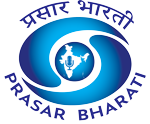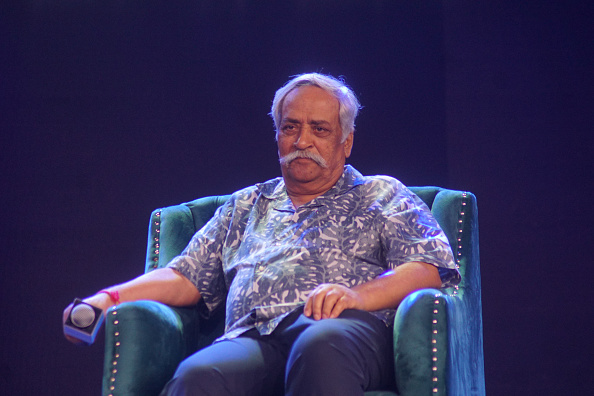Everyone has a Piyush Pandey story. And almost always, it is about his warmth, kindness, intelligence and insights. He was Tom Hanks, if Tom were more creative and had a laughter that could light up ideas and boardrooms.
But this is not my story; it is his. There is not a single Indian whose life has not been touched by the brands he created over the last four decades. From gel stick to glue, from paint to chocolate, from scooters to homes, his campaigns became living stories. But if you are one of the 2% of India who didn’t know the icon behind the icons, let’s rewind.
In 1955, he quietly arrived at the crease in a family that would eventually have nine siblings. He was a myriad – a tea taster, a cricketer dreaming of his Ranji break, a boy from Jaipur who had never studied advertising but will go on to change it forever. Quite a formidable logline for a movie biography on him. Mr Boman Irani, if you are listening.
For the longest time, the only pitch he wanted to be a part of was cricket. Cut to the year before India won the cricket World Cup in 1982, he walked into Ogilvy as a trainee account executive and, over a forty-year innings, turned a profession that had seemed remote into the most familiar voice in Indian homes. Piyush had everything you would want in a quintessential ad man but rarely find. Passion, perseverance, professionalism and patience. Most only have the first two. And many who admire him in the industry itself don’t know that it took him six years to transition from client servicing to the creative department.
What made Piyush a brand unto himself was that he became one of the firsts to talk to Bharat before India and then made India fall in love with Bharat. He took the industry out of the glass tower and into every household. And like all great stories, even this one was destined. This shift he brought came at precisely the moment when India was changing with liberalisation, private television and markets opening up. The old model of advertising, dominated by purely English-speaking cities and borrowed western frameworks, was giving way. Piyush seized that inflection point and rode it.
We use the term “legend” quite loosely today but he truly was one. Some would even say he was the last man standing protecting modern brands differentiate between true love and instant gratification. He always treated advertising like cultivation, not fireworks, finding deceptively simple metaphors that lived in kitchens and courtyards rather than in think tanks. Before memes became a thing, Fevicol had already become a chuckling national joke about things that will not come apart. Mile Sur Mera Tumhara sung in over a dozen Indian languages and promoted by Doordarshan as the national integration video would have topped all the music charts in the post Spotify and YouTube Music era. Do Boond Zindagi Ke quite literally grew unprecedented awareness and eventually helped eradicate a deadly disease like Polio from the country. Asian Paints was not painted as better pigment: Har ghar kuch kehta hai became a language about what a home says about you. When you read Humara Bajaj even today, you hear it. Cadbury Dairy Milk’s Kuch Khas Hai with the girl gleefully celebrating in the cricket stadium, made chocolate suddenly an adult friendly snack in India. ZooZoos did not chase cleverness; their characters became the embodiment of modern virality. Ab ki baar Modi sarkar is possibly the most recalled tagline of the last decade. “Legends” in the west have 3 odd brand creation stories, this man made at least a dozen and possibly one of the most of his generation.
All this while consistently proving that you can make ads that are both memorable and impactful. Drive eyeballs and revenue. Make both the client and customer happy. None of his ads, some immortalised even after three decades, were one-shot viral stunts. They were patient constructions of meaning that folded into everyday people’s lives and speech.
His professional journey maps that slow alchemy. He rose through Ogilvy to become National Creative Director, then Executive Chairman and eventually Global Chief Creative Officer, shepherding an office that was ranked the country’s number one agency for years under his stewardship. He collected major international recognition including multiple Cannes, D&AD awards and festival honours, and in 2016 the Government of India decorated him with the Padma Shri. In 2024 the London International Awards gave him the LIA Legend Award, a formal nod to a career that reshaped a region’s creative DNA.
Piyush’s craft was equal parts anthropology and economy. He mined everyday speech and ritual to create lines and images that were simple enough to remember, yet deep enough to inhabit. Honest disclaimer: It sounds way simpler on paper than in reality. And by making products speak the language of the common room, he made brands communal property, and in the process he became household property himself. That is why, decades into the brands he helped shape, his lines still surface in conversation, his characters still return like old friends at dinner tables, and his name reads less like a CV and more like an emblem in boardrooms. He taught us how to build a brand and then quietly became its living proof.
In an age of spectacular ephemera, Piyush Pandey built permanence, and by doing so, vaulted from adman to archetype.
He arrived like a curious creative footnote and left as the headline of an entire industry.










